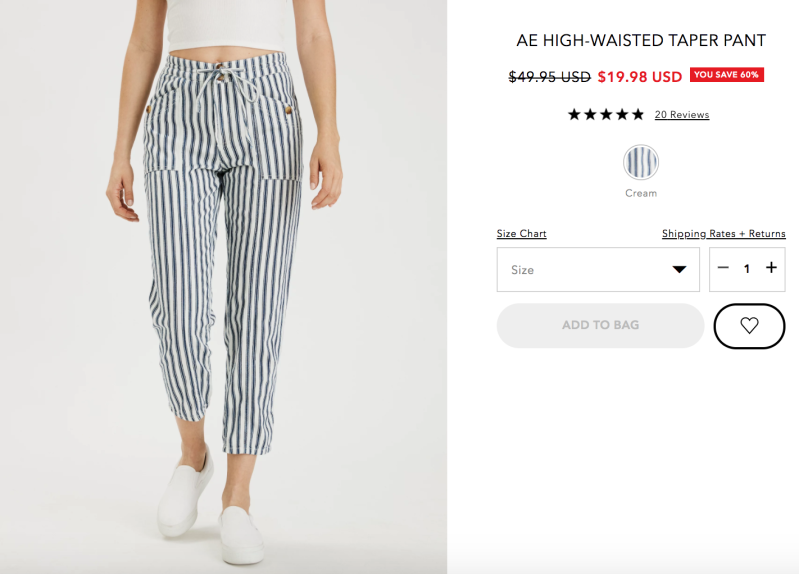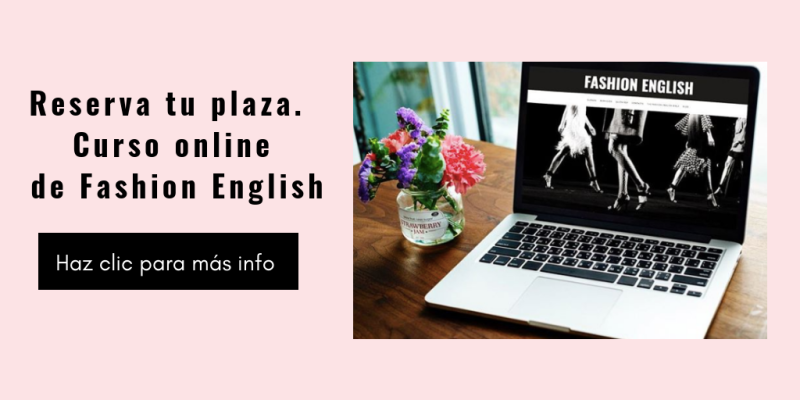Today’s Fashion English lesson is based on Making the Cut Episode 3 of the new Amazon Prime series!
La lección de Fashion English de hoy está basada en el tercer episodio de la nueva serie de Amazon Prime, Making the Cut!
Just like in the previous 2 blog posts, in this article you’ll find a list of 10 vocabulary phrases or expressions that were used throughout episode 3. To take full advantage and deepen your #fashionenglish learning experience, I recommend you have this list in front of you while you watch the episode to try and identify when each word or phrase is said!
Igual que con los otros dos posts de blog, en este artículo encontrarás una lista de 10 fases y expresiones que se utilizaron a lo largo del tercer episodio. Para aprovechar la oportunidad y profundizar en tu aprendizaje de #fashionenglish, recomiendo que tengas esta lista en frente mientras ves el episodio para que intentes identificar cuando se dice cada palabra or frase.
Making the cut EPISODE 3 — #fashionenglish vocabulary
1. Collaborations or Collabs as you like to say — Colaboraciones o ‘colabs’ como te gusta decir a tí
At the beginning of the episode Tim Gunn and Heidi Klum announce the challenge of the day which involves working on a «collab». Heidi describes this type of activity as a popular marketing trend in the fashion industry, such as the Louis Vuitton + Supreme collab. It’s very common to say this word in its short form, instead of saying «collaboration.»
Al principio del episodio Tim Gunn y Heidi Klum anuncian el reto del día que tiene que ver con trabajar en una colaboración. Heidi describe este tipo de actividad como una tendencia de marketing popular en la industria de la moda, como la colaboración reciente de Louis Vuitton con Supreme. Es muy común utilizar la palabra ‘colaboración en su versión corta, ‘collab.’
2. Cut through the noise, and that’s called buzz! — ‘cortar o interrumpir el ruido’ y eso es ‘buzz’
Just like I covered in my book, The Fashion English Bible, the word «buzz» is about creating noise and getting people to talk about something. It is an onomatopoeia that describes the sound that bugs make when they fly, and sometimes it can be very loud! When the hosts of the show say «to cut through the noise», they’re talking about creating designs that really stand out from the rest, and to create buzz!
Tal como describo en mi libro, The Fashion English Bible, la palabra ‘buzz’ se trata de generar ruido y conseguir que la gente hablen de algo. Es una onomatopeya que describe el sonido que crean los bichos cuando vuelan, y a veces este ruido puede ser muy alto en volumen. Cuando los presentadores del programa dice ‘to cut through the noise’, se refieren a crear diseños que destaquen de los demás, y por lo tanto ¡generar ruido!
3. Getting the blazer ready to send out — Preparando la chaqueta de sport para enviarlo
A contestant in this episode is working on a blazer, which is a sports jacket. Not to be confused with a normal suit jacket.
Un concursante en este episodio crea un ‘blazer’ que es una chaqueta de sport. No es lo mismo que una Americana (si quieres profundizar más, esté artículo de GQ está muy bien)
4. His suit has big plaid… No, it’s a window pane suit! — Su traje es de tartán… no, son cuadros de líneas finas.
SPOILER ALERT: In this episode Tim Gunn wears a suit made of «window pane» fabric. There isn’t an exact translation of this pattern so I thought it would be worth it to give you guys a little spoiler by showing you the fabric in the Instagram post below 😉
¡AVISO! HAY SPOILER: En este episodio Tim Gunn se pone un traje de tejido ‘window pane’. No hay una traducción exacta de este patrón así que he pensado que merece la pena hacer un poco de spoiler para enseñaros de qué tejido hablo, enseñando el post de Instagram abajo 😉
//www.instagram.com/embed.js
5. Double breast peaked lapel jacket that we’ve turned into a dress — ‘Chaqueta cruzada con solapa de pico que convertimos en un vestido’
One of the contestants discusses the look they’ve made for the challenge and explains it very well: «double breasted peaked lapel jacket that we’ve turned into a dress», and as you’ll see in the episode, the result is a beautiful coat dress.
Uno de los concursantes habla del look que ha creado para el reto y lo explica muy bien: ‘Chaqueta cruzada con solapa de pico que convertimos en un vestido’ y como podrás ver en el episodio, el resultado es un vestido tipo abrigo muy bonito.
6. We will also have a drape that comes from the waistband and cascades down — También tendremos un drapeado desde la cinturilla que cae en cascada
When describing one of their designs, this fashion designer talks about a specific detail. A draped piece of fabric that starts at the waist and «cascades» down. The word «cascade» is just like in Spanish, ‘cascada’, but it can also be used as a verb like in this sentence.
Al describir uno de sus diseños, el diseñador de moda habla sobre un detalle en concreto. Un tejido drapeado que empieza en la cintura y cae en forma de cascada. La palabra ‘cascade’ en inglés es igual que la palabra ‘cascada’ en español, pero se puede utilizar como verbo como en esta frase.
7. We can’t do any lining, we have to glue it — No podemos hacer un forro, lo tenemos que pegar
The designer runs out of time and unfortunately cannot sew the lining into the garment, so she ends up gluing it one.
La diseñadora se queda sin tiempo y desafortunadamente no puede coser el forro a la prenda, así que termina pegándolo.
8. The former EIC of Vogue Paris — La antigua directora de Vogue Paris
The abbreviation «EIC» means «Editor-in-chief» which is essentially the person in charge of a magazine, in the case, we’re talking about one of the judges, Carine Roitfeld.
Las siglas EIC significan ‘Editor-in-chief’ (en español decimos ‘director/a de revista’), y es esencialmente la persona encargada de la revista, en este caso, estamos hablando de
9. Should have been tapered more at the waist but it’s beautiful — ‘Tendría que estar más ceñido en la cintura pero es preciosos
The judge of the design competition points out that the design would have been better with a more cinched waist. She uses the word «tapered» which we normally use when we talk about pants. When you «taper» a pant, it means you make it more narrow at the bottom, as opposed to keeping a straight or wide leg. Below is a photo of a tapered pant by American Eagle.
La juez de la competición de diseño señala que el diseño sería mejor si la cintura fuera más ceñida. Utiliza la palabra «tapered» que normalmente utilizamos para hablar de pantalones. Cuando utilizas este verb, ‘taper’, quiere decir que estrechas la pierna, en vez de dejarlo recto o ancho. Abajo puedes ver una foto de un pantalón «tapered» por American Eagle.

10. It’s very matchy, matchy, matchy! — ‘xxxx’
The last term I’d like to cover from this episode is «matchy», which comes from the verb «to match» which we saw in a previous article. «To match» means to go well together or be very similar. One of the judges comments that the 3 looks of the collab collection are too «matchy matchy mathcy,» and this has become something negative in design, it’s associated with being too predictable.
El último término que me gustaría cubrir hoy es la palabra ‘matchy’, que viene del verbo ‘to match’ que vimos en un artículo anterior. «To match» significa que ‘va bien una cosa con otra’ o que es ‘muy similar’. Uno de los jueces comenta que los tres looks de la colaboración son demasiado ‘matchy matchy matchy,’ y esto se ha convertido en algo negativo en diseño, que se asocia con ser demasiado predecible.

